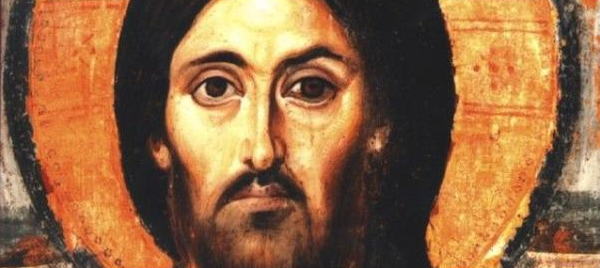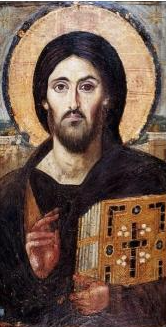St John at Hampstead
2 June 2024
Mark 2: 23-3:16
There’s an icon of Christ that you may have encountered
and which I added the service booklet this week. It can a
bit disorienting, a bit confusing, in fact you might say
there is something wrong with it. The icon is known as the
Christ of Mercy and Judgement. It’s a little bit like an
optical illusion. Here’s how it works. If you place your
palm covering one side of the face of Christ, you will be
regarded with an eye that seems to be full of mercy. Switch
your hand to the other side and you see an expression of
judgement. It’s an image that can be a bit uncomfortable,
maybe even troubling, until we learn to sit with both sides
of the face of Christ.


It might be helpful to think about this icon as we explore
the balance between judgment and mercy, resulting from
two actions of Jesus and his disciples.
Jesus and his followers seem to have deliberately placed
themselves into conflict with the Pharisees which provoke
words of judgement. The disciples did not need to pluck
the heads of the grain and nibble at them. While it is the
kind of thing any of us might do while idly walking along
the edge of a cornfield, it could almost be seen as a
provocative move, especially if they knew they were being
observed. Then Jesus performs an act of mercy by openly
heals a man with a withered hand, in the synagogue, where
he can be absolutely sure that he is under surveillance. We
are at the very beginning of St Mark’s account of Jesus’s
ministry and already we are seeing a glimpse of the stern
eye from the icon of mercy and judgement.
It is of course easy to take examples like these and use
them to emphasise Jesus’s radical ministry, to say that he is
attacking the rules. But Jesus lived and died an observant
and faithful Jewish man, and as he says in St Matthew’s
Gospel account—‘do not think that I have come to abolish the
law or the prophets; I have come not to abolish but to fulfil’. If we
seek to understand him—to follow him—we will need to
think a little more deeply as to what is happening in this
gospel reading.
Yes, there is a sense of things being challenged, held up to
the light, examined closely to find the real motivations
behind the law. Sabbath is a very significant practice, it
has real cultural value and it is deeply linked to Jewish
identity. Jesus never rejects the idea that the sabbath is
anything but significant. Instead he is challenging the
notion of what work might mean on this special day.
Sabbath points towards life and love—it was given by God
as a time of rest, refreshment and for the flourishing of
family life. It is linked to holiness and to the very goodness
of creation. It also carries within it the echoes of liberation
from slavery. In saying that the sabbath was made for—
gifted to—human beings, rather than the other way
around, then perhaps in this context what Jesus is actually
doing is calling for a restoration of the true, the original
meaning and purpose of Sabbath.
We see the stakes rise as the Pharisees continue to watch
him. Having wandered through the field he is now in the
synagogue under full scrutiny. And he does what he must,
what he was born to do—he heals. He takes the withered
hand of a man and in healing it he sets him free. Free to
wander through a field and pluck the heads of corn if that
is his wish. Jesus recreates in this man the ability to hold,
to grasp, and to raise his hands in a prayer of thanks to
God for his healing. But this cannot be seen by his those
who scrutinise Jesus—and so the eye of mercy which has
gazed with compassion on the man to be healed, is now
turned to anger and judgement.
It’s a real challenge to us all, because it prompts us to ask a
question of ourselves. Is anything that we do making us
inaccessible or remote from those who might want to hear
and experience the love of God? Can we do more to make
others feel welcome, or to offer a hand of friendship? Can
we be certain that we are not offering a narrow version of
the wide and abundant love of God? Can we devote mental
space to developing our life in God? Can we set aside time
to get to know God better?
What do we do with our day of rest—our Sabbath. In my
life time alone, the notion of a day off has begun to slip
away, with zero contract hours and the gig economy. Not
having a ring-fenced day of rest poses its challenges to us.
When and where do we stop and hold the whole of our life
before God? How do we save a time for just pure
enjoyment with friends and family? How does the so-called
flexibility of everyone having a different day off help us to
build up a common life with friends and family?
These are questions that we all struggle with—whether we
are Christians or not. But when God created the Sabbath,
he meant that it would be a time of rest and joy. It may be
that the whole idea of a Sabbath is now itself
countercultural. In a world that expects us to be constantly
available, it can tempting to equate being ‘busy’ with our
own self-worth.
Mercy is balanced with judgement in the eye of the icon of
Christ. I believe that the gaze of mercy says to each of us
—‘Come and sit with me, let me take your hand and tell you how
much I love you, how much I understand that every day you try to
do good. Let me assure you that I know this, let me invite you to
just rest a little while with me’.
In the name of the Father and of the Son and of the Holy
Spirit.